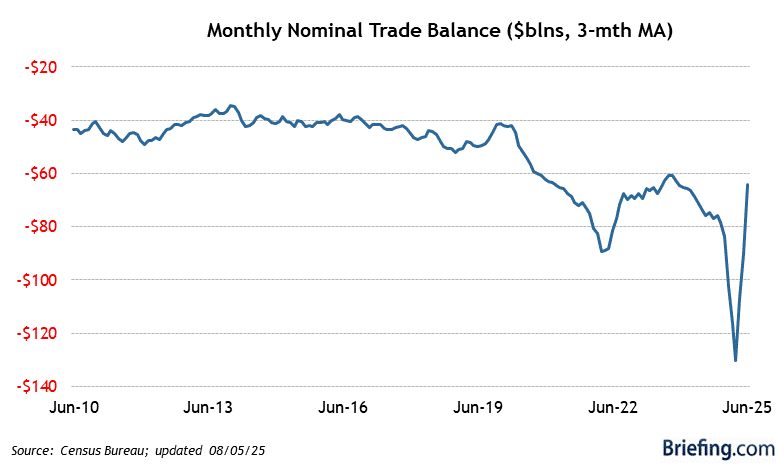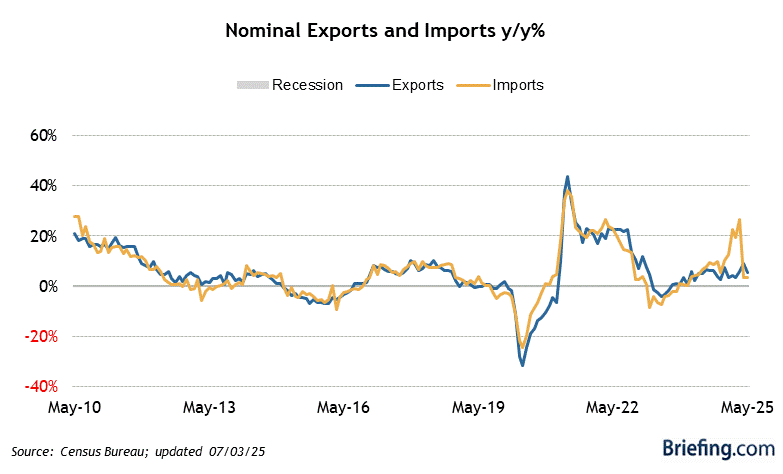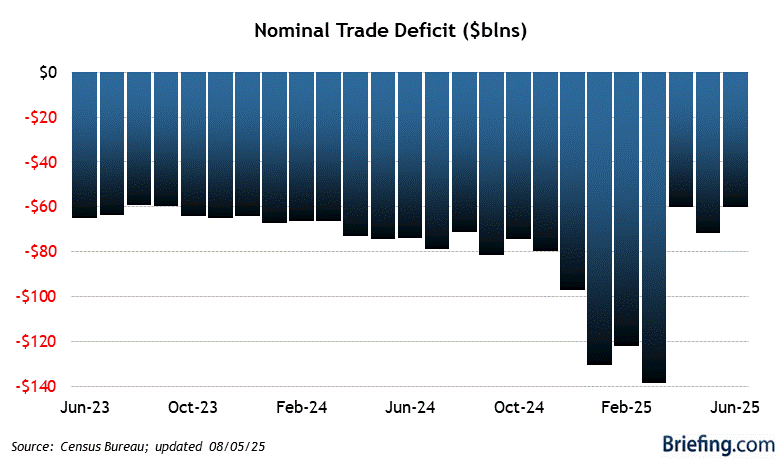Updated: 11-Dec-25 09:25 ET
| October Trade Balance |
| Updated: 11-Dec-25 09:25 ET |



Highlights
- The September trade deficit narrowed to $52.8 billion (Briefing.com consensus: -$61.7 billion) from an upwardly revised $59.3 billion (from -$59.6 billion) in August.
Key Factors
- Exports of industrial supplies and materials increased $7.2 billion, with nonmonetary gold up $6.1 billion.
- Exports of consumer goods increased $4.1 billion, with pharmaceutical preparations up $3.1 billion.
- Exports of capital goods decreased $3.3 billion, with computers down $2.3 billion.
- Imports of consumer goods increased $10.2 billion, as pharmaceutical preparations surged $12.9 billion.
- Imports of capital goods decreased $5.6 billion, with computers down $4.7 billion.
- The real goods deficit decreased $4.7 billion, or 5.6%, to $79.0 billion. That left the Q3 average slightly higher than the Q2 average.
Big Picture
- The key takeaway from the report is that the narrower deficit was the byproduct of exports being $8.4 billion more than August exports and imports being $1.9 billion more than August imports.
| Category | SEP | AUG | JUL | JUN | MAY |
| Trade Deficit | -$52.8B | -$59.3B | -$77.2B | -$59.1B | -$71.1B |
| Exports | $289.3B | $280.9B | $281.6B | $279.7B | $280.4B |
| Imports | $342.1B | $340.2B | $358.8B | $338.8B | $351.5B |